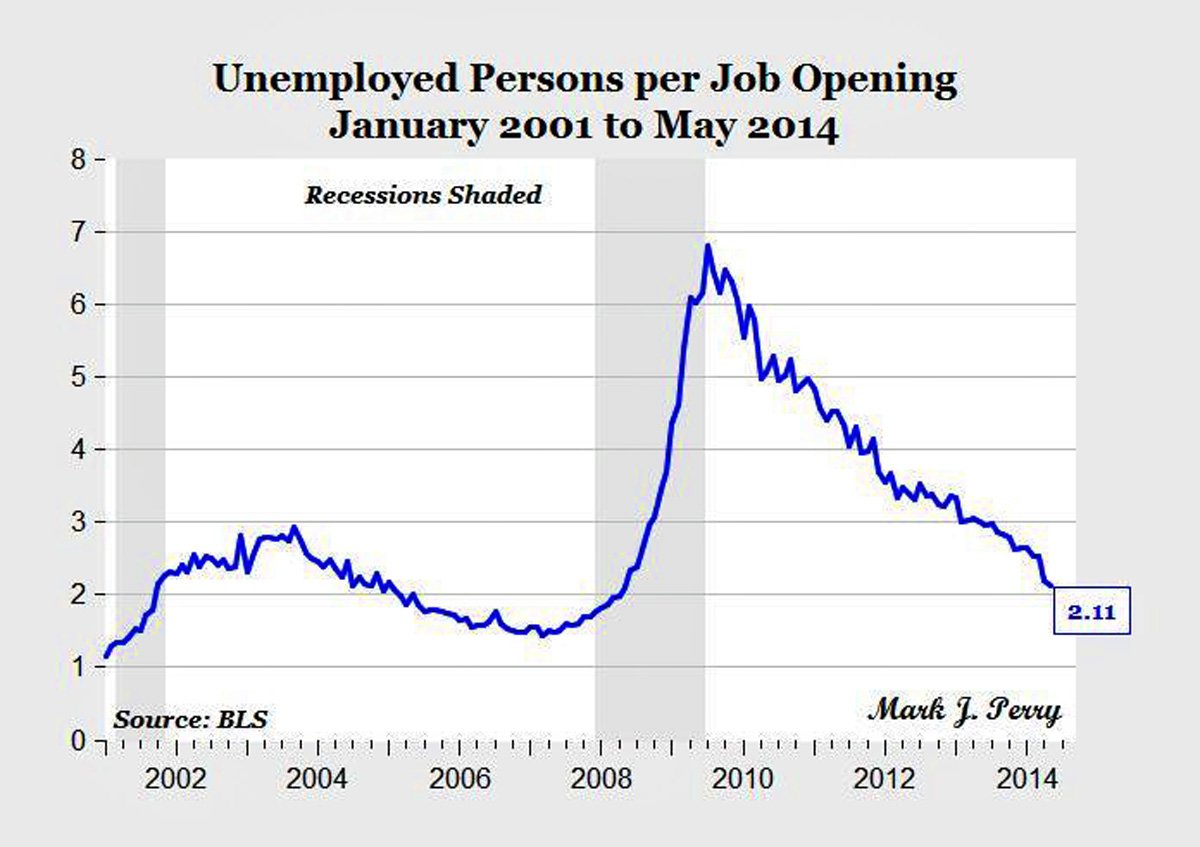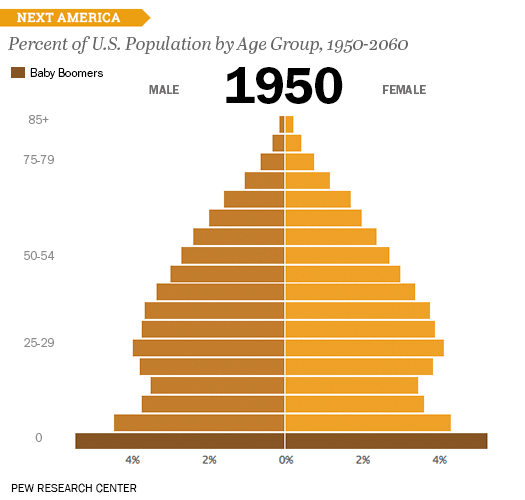CHART OF THE DAY: Unemployed workers per job opening
The latest Job Openings and Labor Turnover Survey (JOLTS) was released last week by the Bureau of Labor Statistics and it showed that US job openings as of May 2014 stood at about 4.6 million, up from 4.5 million in April.
Taking the JOLTS openings data and combining it with gross unemployment data (also from the BLS), and you get the chart below that shows the trend over time in the ratio of unemployed workers per job opening. Take a look at the chart, (from Business Insider) and then some comments from me below.

1. The latest ratio of unemployed workers to job openings is 2.11, the lowest level since early 2008, and extremely lower than the post financial crisis high water mark of almost 7 in mid-2009.
2. The trend seems to suggest a continued lowering of this ratio, as increased hiring will likely be only partially offset by more entrants into the labor marker, (students leaving school, folks getting coaxed back into the labor market due to improving prospects).
3. As an HR/talent pro, you might start finding for more jobs a relative reduction in the number of applicants for your open positions. Unless you are offering so-called 'good' jobs, have a compelling employer value proposition, or have a proven pipeline of candidates, there will be, at least in aggregate, fewer available people for your jobs.
4. As a consequence of this labor market tightening, your Econ 101 book will tell you that wages are going to have to begin rising more steeply. Again, this is what the economists predict, but for you, all Economics is local. If indeed you are finding it difficult to attract adequate numbers of qualified candidates, then you are going to have to take a long, hard look at the compensation you are offering for these roles. More and more categories of workers are going to at least perceive they have more leverage, (same goes for existing employees too).
5. With fewer unemployed people per job in the labor pool, it is going to be paramount, even for many entry-level jobs, that you get better at identifying talent from competitors and companies in adjacent industries in order to maximize your candidate flow. It could be the days of simply posting a job online, or placing a Help Wanted sign in the window simply to get the candidates you need are disappearing.
OK, that is it on this from me. What do you think, are you seeing the markets for your open jobs getting tighter?

 Steve
Steve



